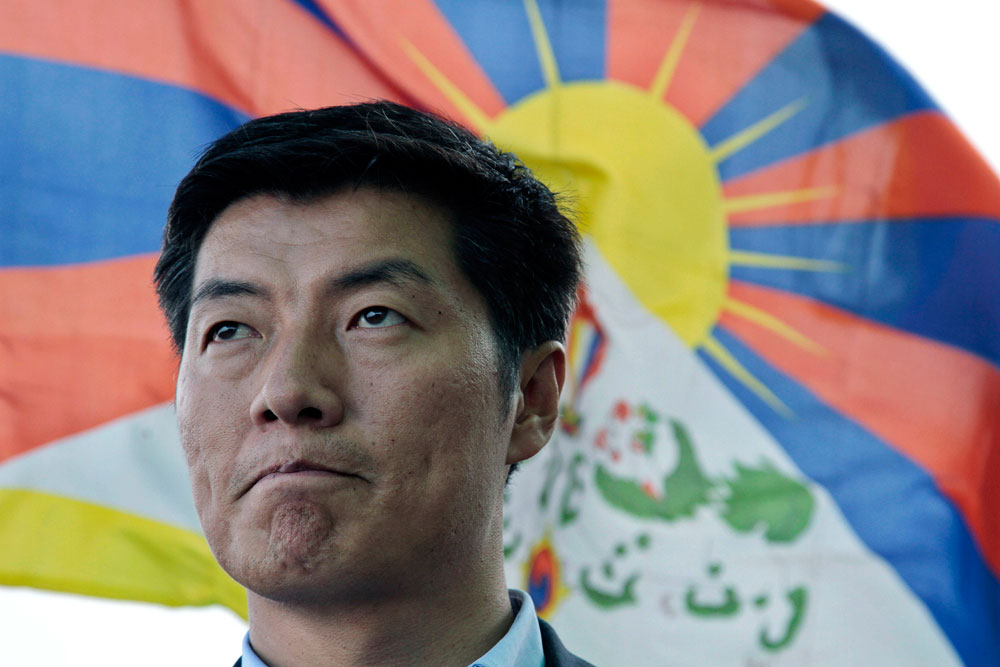
The prime minister of Tibet’s exiled administration says Canada could be a strong supporter of his people’s pursuit of human rights.
Lobsang Sangay says Tibet sees Prime Minister Justin Trudeau’s government as an obvious partner in the “struggle” for freedom in the region.
Tibet has been under Chinese control since the 1950s, when its spiritual leader, the Dalai Lama, was driven out by invading forces.
“Globally, you can see there is a decline of internationalism and liberalism compared to the 1990s, and there is an increase of nationalism and extremism around the world. So you can clearly see from Brexit, not just Trump, actually – the President of Philippines, and [Japanese Prime Minister] Shinzo Abe, even Israel – it’s a global trend,” Mr. Sangay said in an interview with The Globe and Mail on Monday.
“As for human rights and basic freedom, we [Tibetans] are more on the internationalism and liberal side.”
Mr. Sangay is in Ottawa this week meeting with parliamentarians for the first time since the Liberals came to power last year.
“Globally, you can see there is a decline of internationalism and liberalism compared to the 1990s, and there is an increase of nationalism and extremism around the world. So you can clearly see from Brexit, not just Trump, actually – the President of Philippines, and [Japanese Prime Minister] Shinzo Abe, even Israel – it’s a global trend,” Mr. Sangay said in an interview with The Globe and Mail on Monday.
“As for human rights and basic freedom, we [Tibetans] are more on the internationalism and liberal side.”
Mr. Sangay is in Ottawa this week meeting with parliamentarians for the first time since the Liberals came to power last year.
He is seeking Canada’s support for Tibet’s pursuit of autonomy within the framework of the Chinese constitution, known as the “middle-way approach.”
The meetings come as Ottawa seeks closer ties with China, including exploratory talks on a free-trade deal.
“The U.S. government has come out in support of the middle-way approach,” said Mr. Sangay, who has been the Tibetan political leader since 2011.
“The U.S. government has come out in support of the middle-way approach,” said Mr. Sangay, who has been the Tibetan political leader since 2011.
“It would be nice and very appreciated if the Canadian government also supported the middle-way approach.”
While Foreign Affairs Minister Stéphane Dion’s office did not clearly say whether Canada would publicly support the idea, press secretary Chantal Gagnon said the minister raised the issue of Tibet in his meetings with his Chinese counterpart, Wang Yi, on June 1 and Sept. 23.
“Our government will continue to have frank discussions with China, including on the respect for the rule of law and human rights of all Chinese citizens, including Tibetans. We have consistently advocated substantive and meaningful dialogue between the Chinese government and the Dalai Lama or his representatives to work toward a resolution that is acceptable to both sides,” Ms. Gagnon said.
Mr. Sangay suggested Canada share with China its experience dealing with its own minority issues, such as the Quebec referendum of 1995, as a way to start a conversation on Tibet.
“I think Canada can proudly share its experience on how to solve minority issues,” Mr. Sangay said. “Quebec could be a good reference as far as the Canadian government is concerned.”
He said he would also welcome a commitment from the federal government to resettle additional Tibetan refugees from India.
While Foreign Affairs Minister Stéphane Dion’s office did not clearly say whether Canada would publicly support the idea, press secretary Chantal Gagnon said the minister raised the issue of Tibet in his meetings with his Chinese counterpart, Wang Yi, on June 1 and Sept. 23.
“Our government will continue to have frank discussions with China, including on the respect for the rule of law and human rights of all Chinese citizens, including Tibetans. We have consistently advocated substantive and meaningful dialogue between the Chinese government and the Dalai Lama or his representatives to work toward a resolution that is acceptable to both sides,” Ms. Gagnon said.
Mr. Sangay suggested Canada share with China its experience dealing with its own minority issues, such as the Quebec referendum of 1995, as a way to start a conversation on Tibet.
“I think Canada can proudly share its experience on how to solve minority issues,” Mr. Sangay said. “Quebec could be a good reference as far as the Canadian government is concerned.”
He said he would also welcome a commitment from the federal government to resettle additional Tibetan refugees from India.
More than 900 Tibetans have arrived in Canada since 2013 as part of the previous government’s commitment to resettle 1,000 members of the minority group.
The remaining refugees are set to arrive by the end of January.
A senior official in Immigration Minister John McCallum’s office did not say whether the government would announce another Tibetan resettlement initiative, but reiterated Canada’s commitment to uphold its “humanitarian tradition to resettle refugees and offer protection to those in need from all parts of the world.”
Mr. Sangay will meet with members of the all-party Parliamentary Friends of Tibet in Ottawa on Tuesday.
Mr. Sangay will meet with members of the all-party Parliamentary Friends of Tibet in Ottawa on Tuesday.
As of Monday, he didn’t have any meetings scheduled with cabinet ministers. It is his administration’s policy not to make such formal meeting requests.
Aucun commentaire:
Enregistrer un commentaire